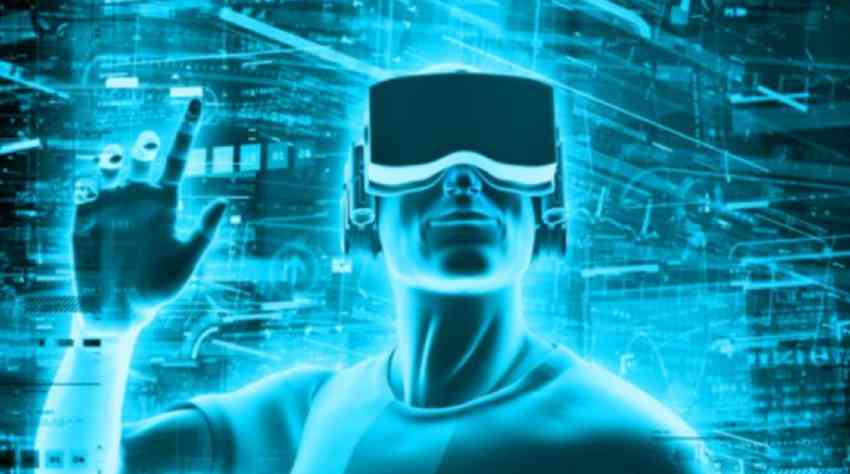Considering recent forecasts, virtual reality (VR) and augmented reality (AR) could well become the biggest technology disruption since the arrival of smartphone. The increase in sales of VR devices and recent advancements in the AR space are compelling IT and industry leaders to employ these game-changing technologies to intensify the customer experience, cultivate brand loyalty, and relish greater returns from their physical and online investments.
Digital technology advancements have driven “e-shopping” to a new level, allowing consumers to more effectively interact with brands, search for information, try products, communicate with other customers and, most importantly, to buy those products in real time. The arrival of mobile apps and related technologies has turbocharged e-tail globally.
Virtual Reality (VR) is a computer-generated projection of a world encompassing the user. Based on the degree of involvement, the user may interact with objects in this simulated world or just be a spectator and experience the sight and sounds as if they were real.
Augmented reality (AR) upgrades that experience to the next level by overlaying computer-generated sensory input (sound, touch, hearing, smell, taste) “on top” of a real-time environment.
Customers can now enter the areas of virtual and augmented reality and immerse themselves in a real-life, real-time shopping experience that combines the best of the physical and digital worlds including in-store and online. Now there won’t be any limitation on their shopping experiences to online or at a store’s physical site. Virtual and augmented realities are becoming an integral platform for leading retailers, and an important component of the overall shopping experience. Today, shoppers can browse, try on and buy items within real-life, real-time environments that look, feel and “act” like familiar, traditional store locations.
Virtual and augmented reality will radically change how and where retailers do business, as well as how shoppers browse and buy. AR and VR allow retailers to raise the bar within their physical and online store environments, and provide extraordinary, “face-to-face” experiences for consumers, regardless of where and how they shop. No longer limited to shopping at their devices or at a store’s street address, customers can now enter the domain of virtual reality and immerse themselves in a real-world, real-time shopping journey.
Shoppers will be the chief beneficiaries of VR and AR-enabled retail channels. Each time they browse or buy, they will discover a new and better way of shopping that offers:
- Rationalized product selections allow shoppers to virtually view, put on or put out items from a digital product catalogue and smart shelves – enabling them to make faster and more informed decisions. Thus resulting in right product selection and reducing impulse purchases.
- Real-time feedback from friends, families and other trusted sources make it easier and more enjoyable to select and purchase the right product.
- An immersive environment arranged around a customer’s buying behavior affords a super-personalized, highly digital, 360° interactive shopping experience.
The technologies that reinforce virtual and augmented reality allow retailers to blend the best qualities of their physical and online stores using a single computing platform.
A large number of digital platforms and applications (Omni channel, e-commerce, next-gen payment systems, near field communications and beacons) have surfaced in recent years; out of which none has managed to grab the attention since the smartphone inserted itself into the hearts and minds of our culture. Until now.
Virtual and augmented reality provides a platform for retailers to transform the shopping experience and redefine commerce as we have known it until now. Virtual reality (VR) replicates real-world situations in which a person can interact and respond (think gaming). Augmented reality is the combination of virtual reality and real life, as developers can create images within applications that blend in with the contents in the real world. With the help of AR, users are able to interact with virtual contents in the real world, and are able to differentiate between the two. No longer limited to shopping online or in stores, consumers can enter the virtual universe and become part of a real-time, all-inclusive user-friendly shopping environment.
It is evident that the digital economy is shifting the balance of power from retailer to consumer. Consumers are easily distracted by the endless collection of online shopping options and spoiled by e-tailing’s seemingly unlimited choices. They expect more engagement and entertainment throughout the entire shopping journey. They are not just looking for products, but they also want a memorable shopping experience. With the decline in in-store customers’ footfalls, and increased competition among online retail players, retailers must reposition their stores as destinations that mix product assortment with entertainment experiences to attract customers. Therefore, they have to redefine the way they engage with their customers. Although virtual and augmented reality have yet to become “business as usual” in the retail sector, in our opinion, time is of the essence for companies looking to get a head start in the domain.
– Poonam Yadav


